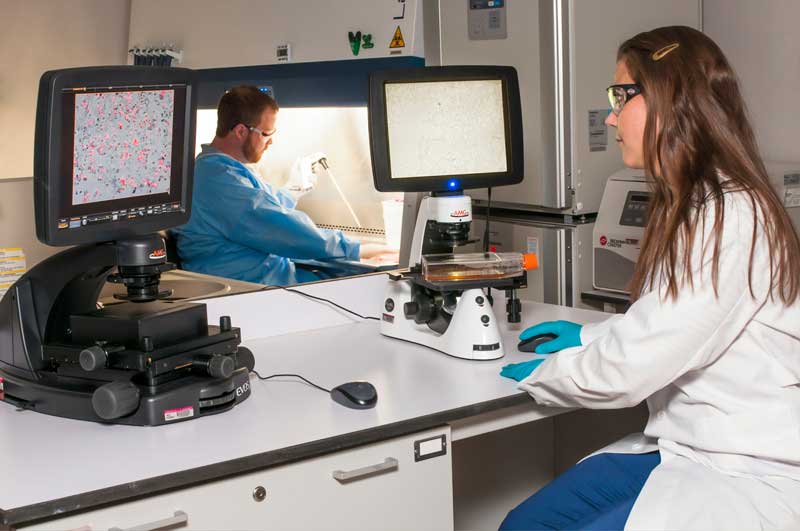
In our previous blog post, we discussed the impact that the employee shortage is having on the clinical lab industry in the United States. As a follow-up, we will explore some of the potential solutions that can help address this problem and ensure that clinical laboratories have the skilled workforce they need to provide high-quality healthcare services.
Clinical Laboratory Recruitment and Retention Strategies
One of the key solutions to the employee shortage problem is to develop effective recruitment and retention strategies. Here are some potential strategies that clinical laboratories can use:
- Partnering with educational programs: Clinical laboratories can partner with educational programs to provide internships, job shadowing, and other opportunities for students to gain hands-on experience. This can help attract young people to the laboratory profession and build a pipeline of qualified candidates.
- Offering competitive salaries and benefits: Clinical laboratories can offer competitive salaries and benefits packages to attract and retain skilled employees. This can include things like healthcare benefits, retirement plans, and flexible work arrangements.
- Providing education and training opportunities: Clinical laboratories can provide ongoing education and training opportunities to help employees stay up-to-date with the latest technologies and best practices in the field. This can help increase job satisfaction and reduce turnover.
- Offering advancement opportunities: Clinical laboratories can offer opportunities for career advancement, such as promotions or lateral moves into different areas of the laboratory. This can help employees feel valued and invested in their work.
Automation and Technology
Another potential solution to the employee shortage problem is to implement automation and technology in the laboratory. Here are some examples of how this can be done:
- Implementing automated testing systems: Clinical laboratories can implement automated testing systems that can process samples quickly and accurately, reducing the need for additional staff.
- Using artificial intelligence and machine learning: Clinical laboratories can use artificial intelligence and machine learning to analyze data and identify patterns that may be missed by human analysts. This can help reduce the need for additional staff and improve the accuracy of test results.
- Implementing digital pathology: Clinical laboratories can use digital pathology to digitize slides and images, reducing the need for technicians to spend time manually analyzing samples.
- Using telemedicine: Clinical laboratories can use telemedicine to connect with patients and healthcare providers remotely, reducing the need for staff to be physically present in the laboratory.
Investing in Employee Engagement
Finally, clinical laboratories can invest in employee engagement to help reduce turnover and increase job satisfaction. Here are some potential strategies:
- Creating a positive work environment: Clinical laboratories can create a positive work environment by promoting teamwork, offering recognition and rewards, and creating opportunities for employee feedback.
- Providing clear career pathways: Clinical laboratories can provide clear career pathways and development opportunities to help employees see a future with the organization.
- Promoting work-life balance: Clinical laboratories can promote work-life balance by offering flexible work arrangements, such as remote work or flexible hours, and promoting wellness programs.
- Encouraging employee input and participation: Clinical laboratories can encourage employee input and participation in decision-making processes, helping employees feel invested in the success of the organization.
Conclusion
The employee shortage is a significant problem facing the clinical laboratory industry in the United States. However, there are several potential solutions that clinical laboratories can use to address this problem and ensure that they have the skilled workforce they need to provide high-quality healthcare services. By implementing effective recruitment and retention strategies, investing in automation and technology, and promoting employee engagement, clinical laboratories can build a strong workforce and ensure their continued success in the healthcare industry.
Recent Posts
- Ensuring Data Security in Clinical Labs: Best Practices for Lab Software Solutions
- The Power of Data Analytics with LIMS in Clinical Labs
- Lab Software and LIMS: Pioneering Digital Transformation in Clinical Labs
- Lab Software Solutions and Technology: The Silent Revolution in Medical Diagnostics
- Revolutionizing Laboratories: How Digitalization and Connectivity Can Transform Lab Efficiency and Quality of Patient Care
